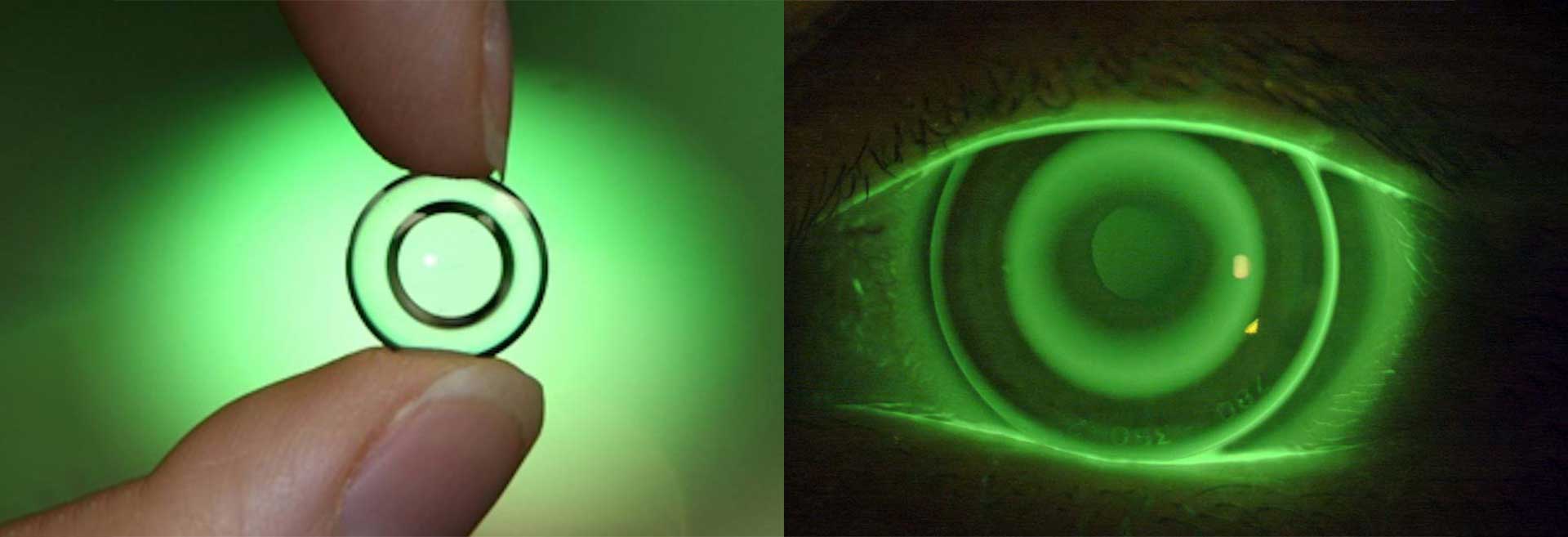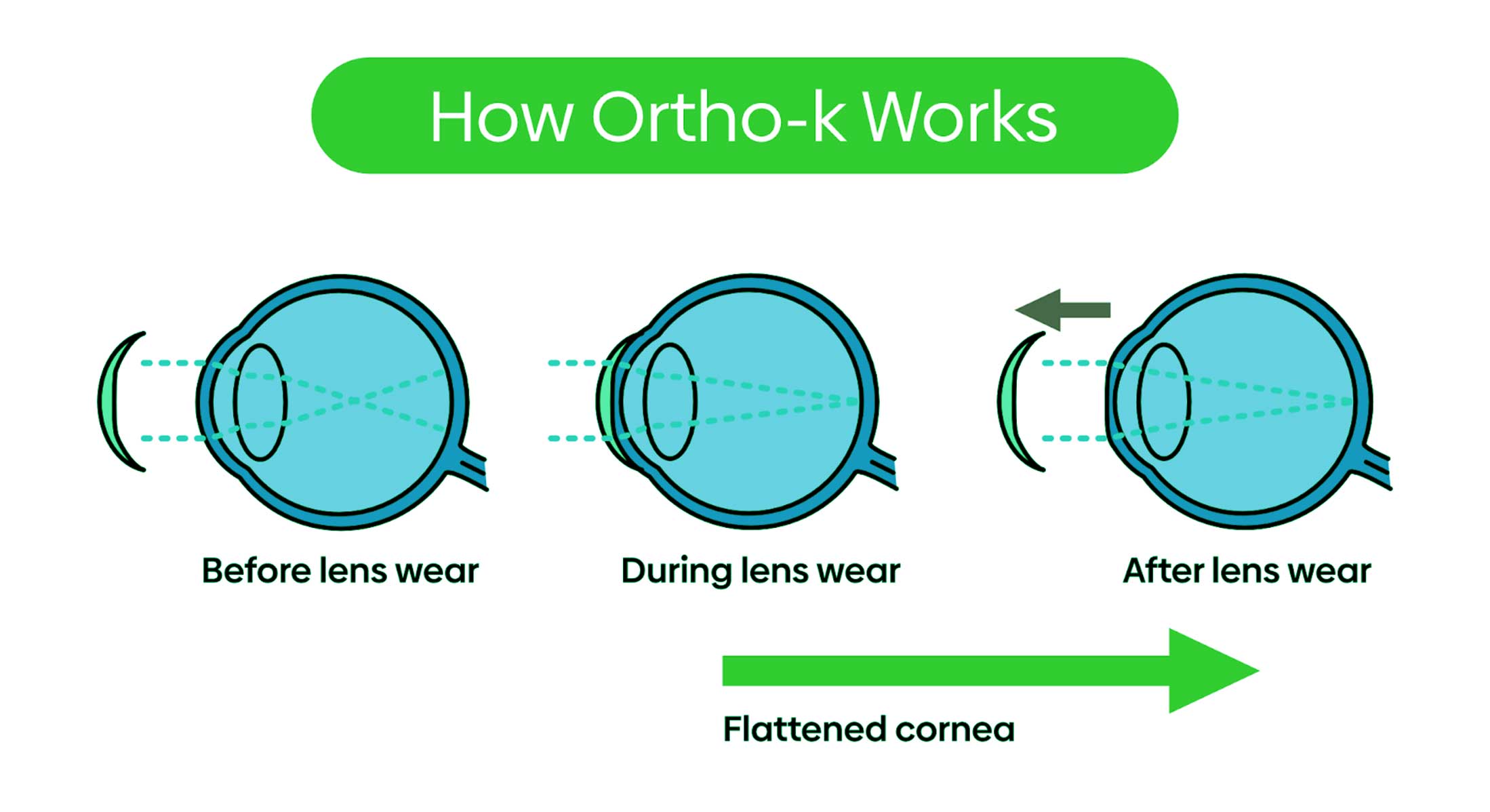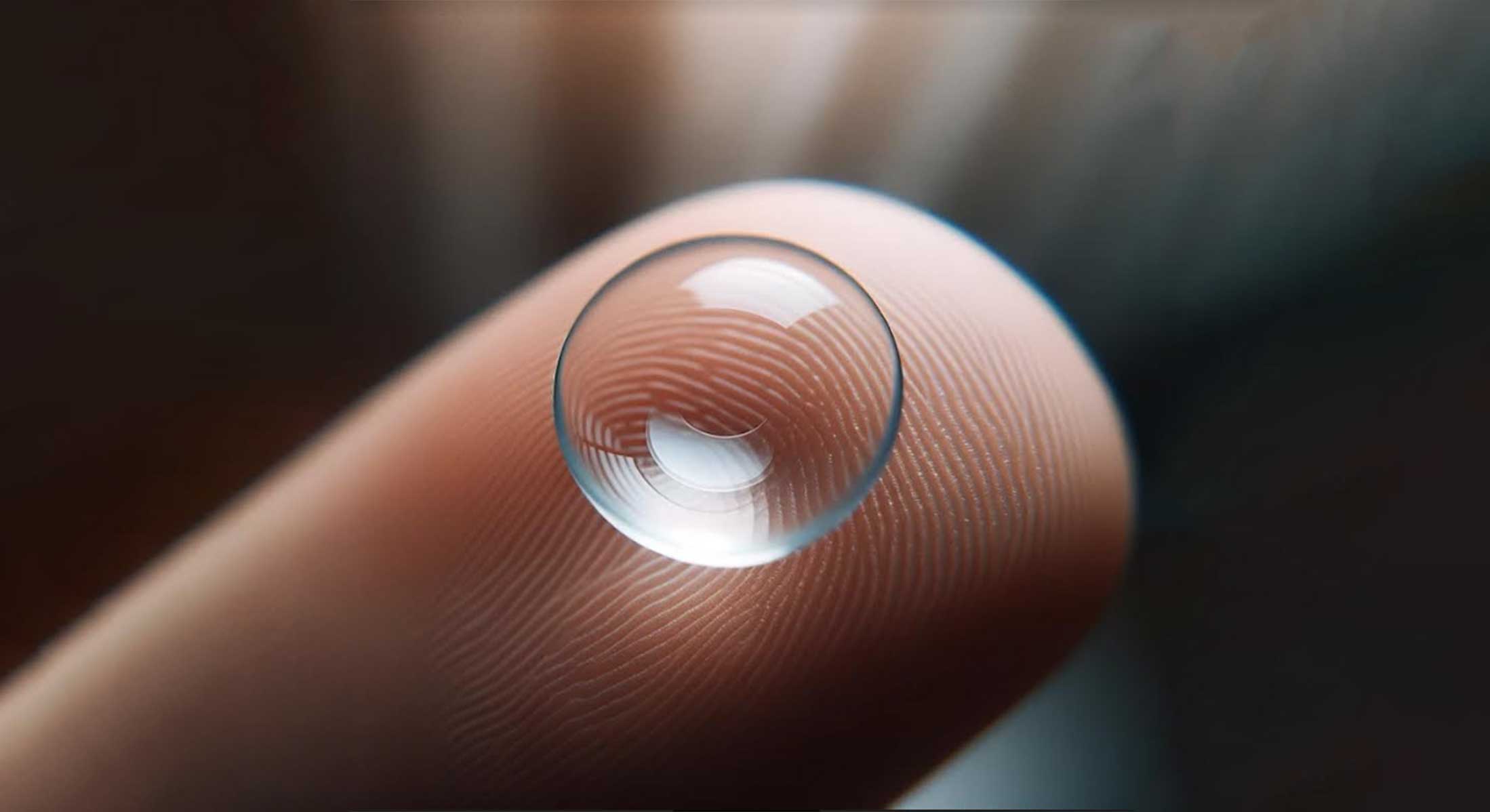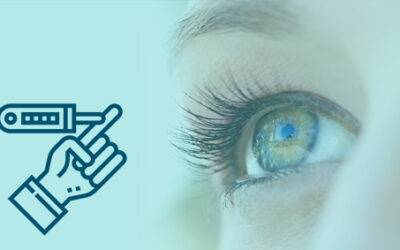Orthokeratology Lenses – A Comprehensive Guide to Overnight Vision Correction

Orthokeratology Lenses – A Comprehensive Guide to Overnight Vision Correction
I n the ever-evolving landscape of vision correction, Orthokeratology or Ortho-K lenses have emerged as a revolutionary, non-surgical alternative to eliminate the need for glasses or daytime contact lenses. Orthokeratology is a safe and effective treatment option to correct refractive errors such as near-sightedness (myopia), farsightedness (hyperopia), and astigmatism. Individuals seeking vision correction without the risks associated with surgery or those who simply want a less invasive alternative to laser vision correction can opt for orthokeratology.In this blog article, we will explore orthokeratology contact lenses – their design, working, effectiveness, and pros and cons.
What is Orthokeratology?
- Orthokeratology meaning – Imagine waking up every morning to clear vision without needing to use glasses or contact lenses. Orthokeratology, often referred to as “ortho-k,” is an innovative technique used to reduce or correct refractive errors in the eye to improve vision. It works by temporarily altering the curvature of the cornea (the clear front surface of the eye), through the utilization of a series of graduated fitted rigid contact lenses over a period of time. Overnight use of ortho-k contact lenses provides clear vision during the day without the need for glasses or traditional contact lenses. It is a safe and effective vision correction method for individuals with mild to moderate refractive errors, including myopia up to -6.00 diopters, hyperopia up to +3.00 diopters, and astigmatism up to 1.50 diopters.
- Orthokeratology Contact Lenses – Orthokeratology lenses are not your average contact lenses. These specially designed rigid, gas-permeable lenses are meticulously crafted to fit each individual’s cornea with precision. The lenses are made from a high oxygen-permeable material, ensuring that the cornea receives adequate oxygen during wear, maintaining eye health and comfort.
- Overnight Orthokeratology – How it Works
- Orthokeratology Lens Design – The effectiveness of orthokeratology lies in its unique lens design. The lenses feature a central vault that fits over the cornea, creating a tear reservoir between the lens and the corneal surface. This tear reservoir allows the lens to exert gentle pressure on the cornea, gradually reshaping it overnight. Fitting ortho-k lenses requires careful evaluation by an eye care professional who will assess the patient’s eye health and determine the appropriate lens design and parameters.
Who Can Benefit from Ortho-K Lenses?
Orthokeratology extends its benefits to both children and adults.
Orthokeratology for Kids – Beyond the convenience of a glasses-free day, ortho-k lenses present a non-invasive and proactive approach to myopia control in children. By impeding the worsening of myopia during childhood, orthokeratology can help prevent the development of severe near-sightedness later in life and reduce the risk of associated eye conditions.
Orthokeratology for Adults – While orthokeratology is often associated with paediatric vision correction, it is a viable vision correction option for adults who:
- Desire independence from glasses and conventional daytime contact lenses
- Are active in sports or other activities that make wearing glasses or contact lenses challenging
- Experience discomfort or allergies associated with traditional contact lenses
- Are not suitable for laser vision correction procedures
Is Orthokeratology Permanent?
N o, orthokeratology does not offer a permanent or lifetime solution for vision correction. While it provides clear vision during the day, the effects of orthokeratology are temporary, lasting for approximately 12-24 hours, depending on the individual’s corneal response and compliance with the lens care regimen. The cornea gradually returns to its original shape if lens wear is discontinued. To maintain clear vision, consistent overnight wear is necessary. Therefore, while orthokeratology offers a reversible solution, its temporary nature can be viewed as an advantage for those hesitant about permanent interventions.Orthokeratology Treatment Pros and Cons
Like any vision correction procedure, orthokeratology has its advantages and disadvantages:
Pros
- Non-Surgical – Orthokeratology provides a non-surgical and non-invasive alternative to vision correction. It is suitable for various refractive errors, including myopia, hyperopia, and astigmatism.
- Myopia Control – Its ability to slow down myopia progression is a significant advantage, particularly for children with mild to moderate myopia.
- Daytime Freedom – Users enjoy clear vision during the day without the need for glasses or daytime contact lenses.
- Ease of use – Convenient and comfortable overnight wear.
Cons
- Nightly Commitment – The success of orthokeratology hinges on consistent overnight wear, which may not suit everyone’s lifestyle. Failure to adhere to the prescribed wearing schedule can slow down the treatment process.
- Potential Discomfort – Some users may experience minor side-effects such as temporary dryness or discomfort during the initial adjustment period.
- Risk of Infection – Improper lens care can increase the risk of eye infections, emphasizing the importance of strict hygiene practices.
- Regular follow-up visits – Frequent eye examinations by the eye doctor are necessary to monitor your progress and make adjustments to the treatment plan as needed.
- Not a permanent or lifelong solution – Orthokeratology is a temporary solution to vision correction, requiring continued use to be effective. If you stop wearing the ortho-k contact lenses, the cornea gradually returns to its initial shape and refractive power over time.
Is Orthokeratology Safe?
O rthokeratology is generally considered safe when properly fitted and monitored by a qualified eye doctor and practiced with proper lens care. Studies have shown no long-term adverse effects associated with ortho-k. Regular follow-ups with an eye doctor are essential to monitor eye health and address any emerging issues promptly.Orthokeratology Lenses Side Effects/Risks/Problems
Potential side effects of orthokeratology include:
- Temporary dryness or discomfort – This can be managed with artificial tears or lubricating eye drops.
- Over correction or under correction – This can be adjusted by modifying the lens design or wear time.
- Infection – Proper lens care and hygiene practices are essential to minimize the risk of infection. Individuals who engage in activities that increase the risk of eye injury or infection, such as contact sports or swimming in contaminated water, may need to take additional precautions when using orthokeratology lenses.
Conclusion
O rthokeratology lenses have undeniably carved a niche in the realm of vision correction, offering daytime freedom from traditional eyewear. As with any medical decision, consulting with an eye care professional is paramount to determine suitability, address concerns, and ensure a personalized approach to vision correction.At Narayana Nethralaya, we can assess your specific needs and help you make an informed decision about how to correct your vision. Schedule an appointment with our team for more information about ortho-k, or to explore how this treatment can benefit you.
Read More Eye Care Blogs
4 Eye Problems That Can Result from Diabetes
If you are a diabetic, it means that the blood glucose or blood sugar in your body is too high. Most of the food you eat is broken down by your body into glucose - the main source of energy that is used for the various functions of the body. Insulin (a hormone made by...
Eye Safety at Home – Tips to Prevent Eye Injuries
ur homes are meant to be safe havens, but they can also be unexpected sources of danger, especially when it comes to eye injuries. Whether it's a mundane task like cooking, working in the yard or garden, Do-it-yourself projects, or even playtime...
Safeguarding Young Eyes – A Comprehensive Guide to Preventing Eye Injuries in Children
s parents, guardians, and caregivers, safeguarding our children's well-being is always at the forefront of our minds. Yet, amidst all the protective measures we take, we may inadvertently overlook a crucial aspect of their health - their eyes. Eye...





